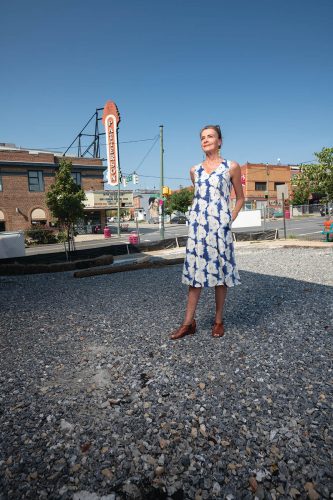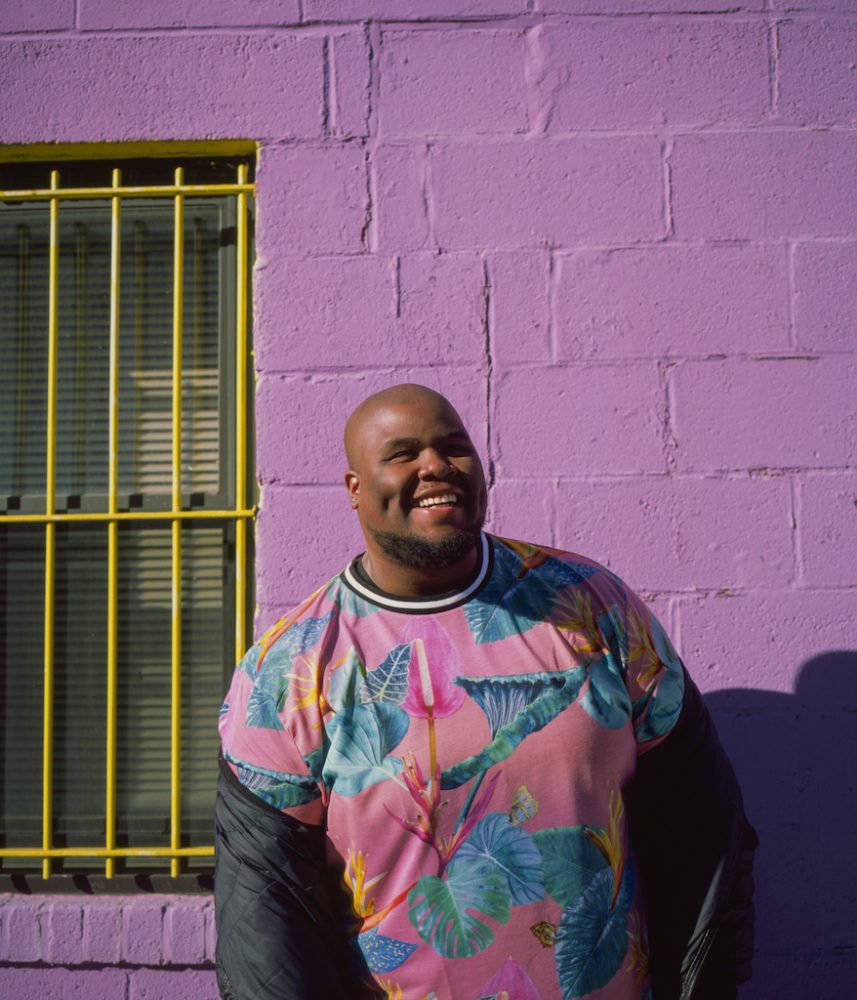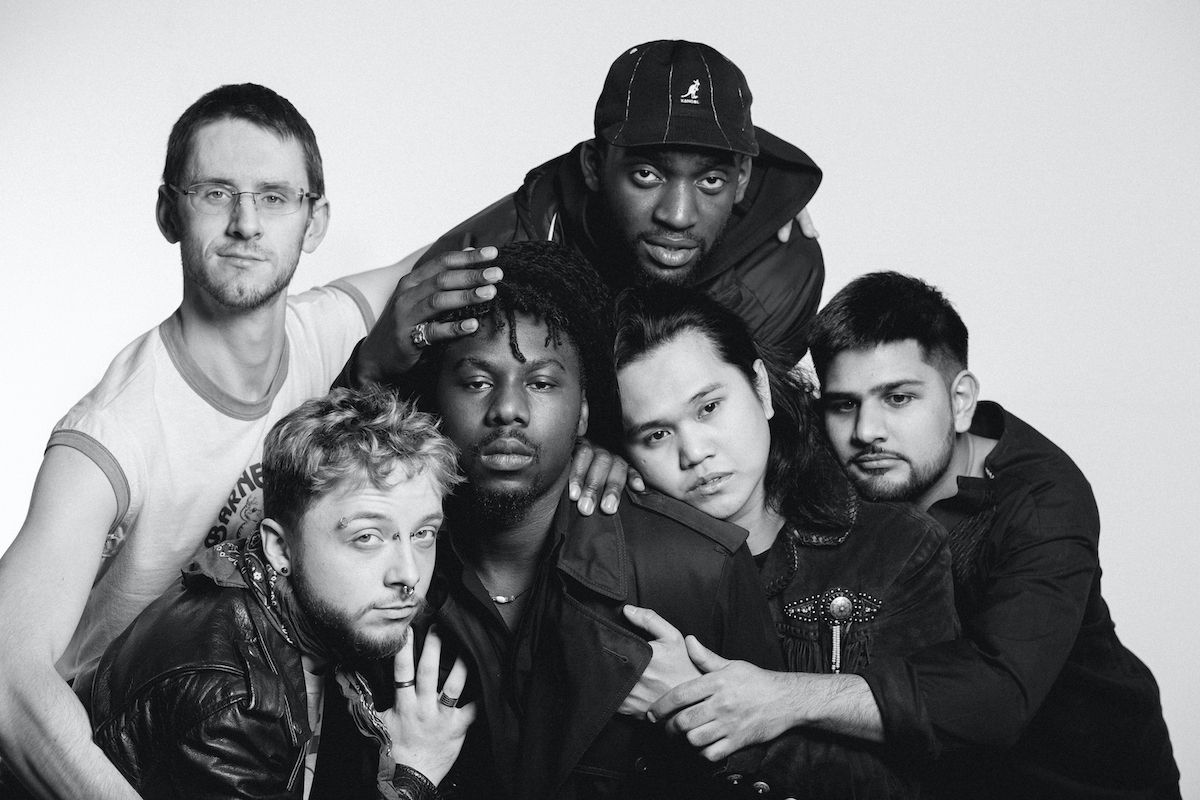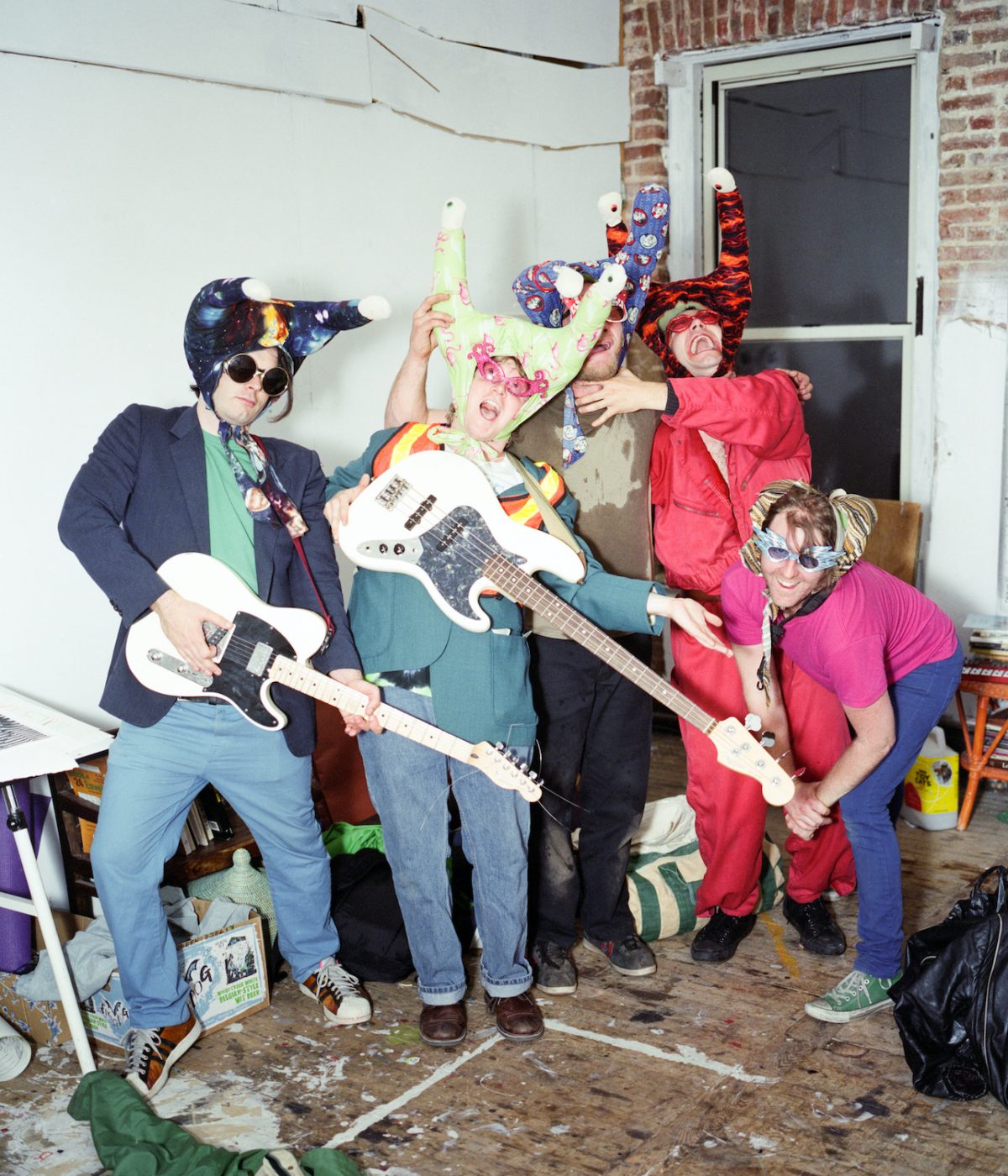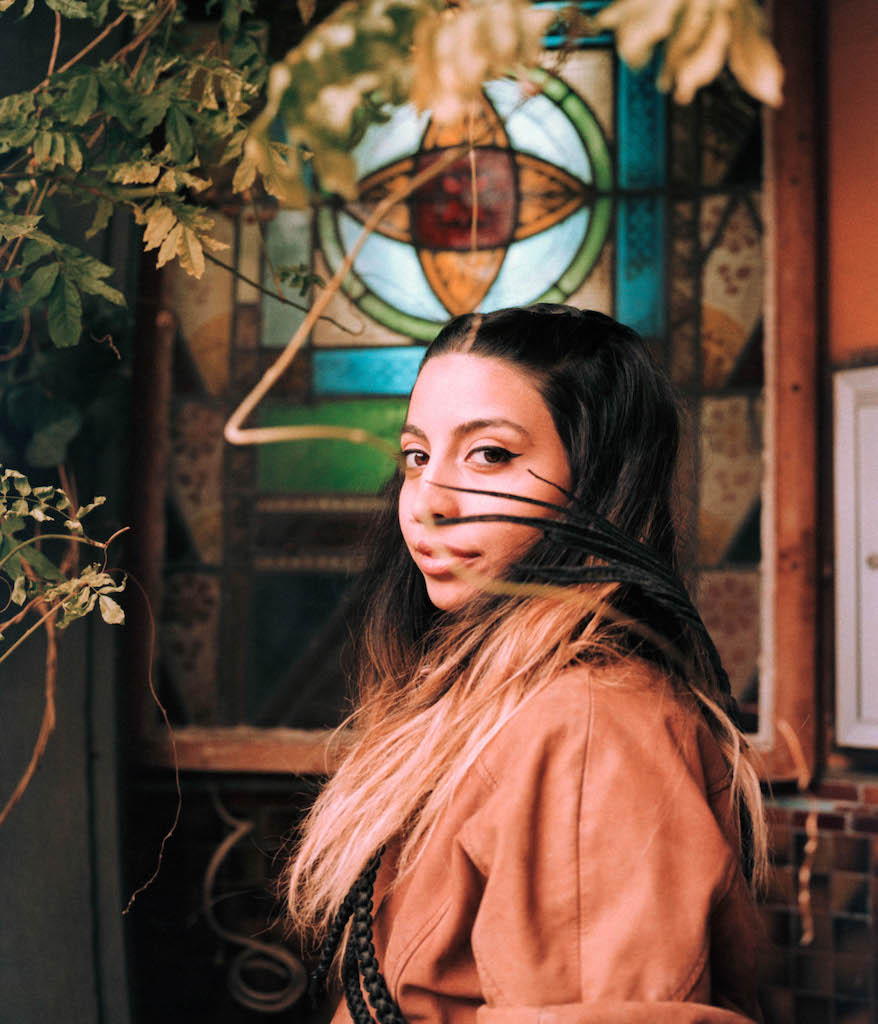Micah E. Wood is a photographer, musician, and graphic designer, and understanding this is key to appreciating his photography. For Wood, all three creative practices are equally important and, despite differences in media and technique, all three enrich one another in surprising ways. Each of Wood’s portraits has a clear sense of compositional structure, and often employs flat color shapes and interesting cropping, in addition to bold color and glowing light. There’s a musical quality to each image as well, a poppy sensibility that feels friendly and authentic, an intimate look into an unguarded moment that could function as a still from a music video you’d want to watch.
For the past decade, Wood has trained his lens on other musicians, creating a multifaceted portrait of a community he’s part of, and with a palpable sense of affection. Wood recently released the album You Are Here, full of electronic beats and acoustic piano. The album is described as “warm and danceable,” and includes cameos and collaborations by Jon Birkholz, Bobbi Rush, Dan Ryan, Modern Nomad, Not Charles, and Ari Pluznik.
“My goal as a photographer is to disarm people, and curate intimate moments with the artists I photograph,” says Wood. “My approach is to use light as a 3-dimensional or sculptural form, a feature that links both my portrait and landscape work. I want my portrait photography to be exploding with color, to build a sense of belonging that can only be achieved by a thorough understanding of the specialness and sense of place in Baltimore.”
Wood moved to Baltimore twelve years ago to attend the Maryland Institute College of Art and earned a BFA in photography with a concentration in book arts. Once he began making music in Baltimore, he began photographing other musicians, with his portrait work from 2012-2016 culminating in the photo book Features. Wood continues to document a wide variety of participants from the local and regional music scene, including TT The Artist, Bobbi Rush, Dan Deacon, Ex Hex, Snail Mail, Outcalls, and more. Just like Wood’s music, his portraits are warm and also, strangely, danceable, a genuine look into Baltimore’s expanding music scene from an artist-insider’s perspective.


